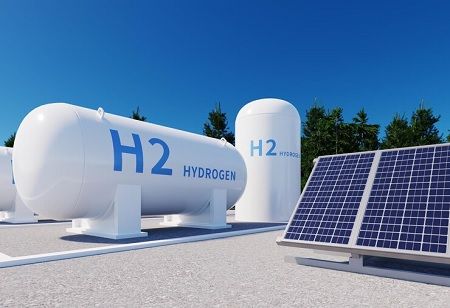
India Eyes $125 Billion Boom in Green Hydrogen Investment Opportunities

 Avendus Capital, an investment bank, forecasts that India could see cumulative investments totaling $125 billion by 2030 across the green hydrogen value chain. In their recent report titled 'Green Hydrogen – the next frontier in energy transition,' Avendus emphasizes the potential for decarbonization offered by green hydrogen and its pivotal role in India's shift towards a more sustainable economy.
Avendus Capital, an investment bank, forecasts that India could see cumulative investments totaling $125 billion by 2030 across the green hydrogen value chain. In their recent report titled 'Green Hydrogen – the next frontier in energy transition,' Avendus emphasizes the potential for decarbonization offered by green hydrogen and its pivotal role in India's shift towards a more sustainable economy.
“This growth will be driven by rising sustainability focus, demonstrated commercial viability, ever-expanding use cases and a strong regulatory push”, the report says. It charts the course from production methodologies to wide-ranging applications, underlining significant opportunities and dispelling myths surrounding the economic viability of green hydrogen.
“India is home to one of the cheapest renewable electricity costs globally, has abundant availability of fresh water and is emerging as a global manufacturing hub -- three essential elements required for the production of green hydrogen at a competitive cost. We see an emergence of the first set of serious standalone and integrated participants forging partnerships to aggregate capabilities and infrastructure to tap into green hydrogen derivatives", Prateek Jhawar, Managing Director & Head, Infrastructure & Real Assets Investment Banking, Avendus Capital said.
"While the commercial and industrial (C&I) business model for domestic consumption of green hydrogen will drive the first set of investments in the sector, the steel industry will form the largest share of off-take contracts in the near term with the imposition of the Carbon Border Adjustment Mechanism in the EU", he further added.
A report highlights that the Central government's introduction of production-linked incentive (PLI) schemes for green hydrogen production and local electrolyzer manufacturing has expanded the target market for renewable independent power producers (IPPs), potentially enhancing project economics. It suggests that despite early-stage investment risks, the sector's current trajectory indicates a forthcoming shift, supported by government initiatives.
“In terms of project bankability, green hydrogen is already viable for a subset of target off-takers and its derivatives are also gaining visibility in global markets. Hence, long-term contracts are already available. In the absence of long-term contracts, we expect the grey molecule price benchmarks to act as de-facto for debt sizing and a corporate financing model to emerge and co-exist with the project financing model”, Akhil Dokania, Director, Infrastructure & Real Assets Investment Banking, Avendus Capital said.